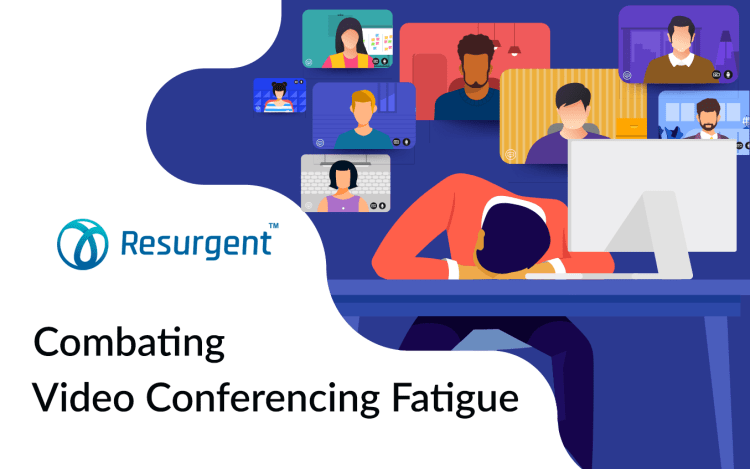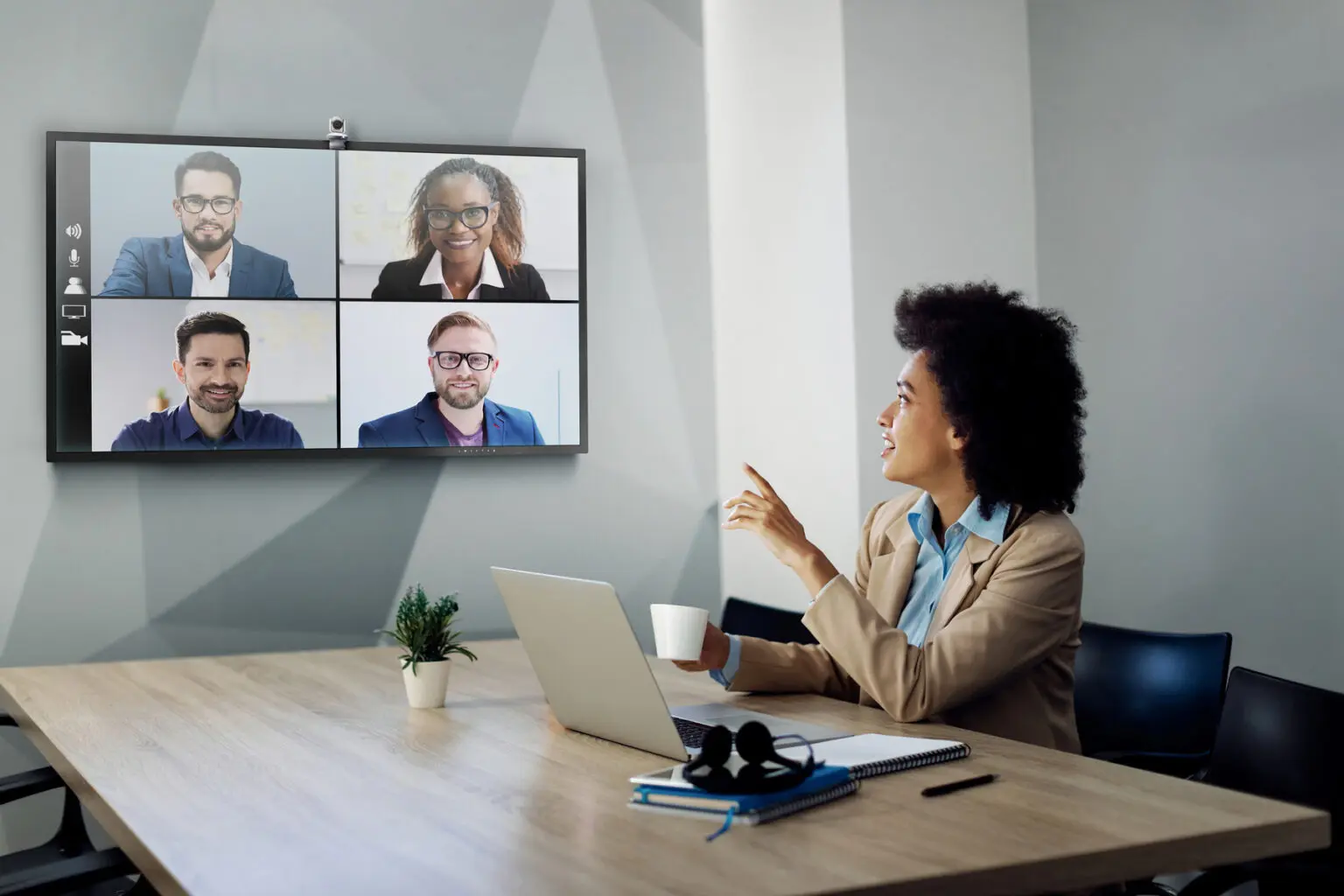Recently, a study revealed that 82% of the 476 organizations interviewed use video for all or most meetings. 82% said that video usage continued to increase from end-2020 into 2021. Additionally, the future of the workplace is now hybrid. That means that video calls will remain an important part of the work landscape – whether for internal communication or customer collaboration. But this has also led to the rise of an interesting phenomenon called ‘Zoom Fatigue’, or ‘Video Conferencing Fatigue’.
There are many reasons for this condition. A Stanford article reveals that some factors behind this exhaustion include excessive amounts of close-up eye contact, seeing ourselves during video chats in real-time, video chats reducing our usual mobility, and the burden of a higher cognitive load.
The very act of video conferencing takes a toll on employees. Many have noticed that being on a video call demands more focus than a face-to-face conversation. That’s because our brains need to work harder to process non-verbal cues, such as facial expressions, vocal tone and pitch, and body language. Having to use more energy to decipher these signals via audio-video tools is what tires us out.
Considering all this, doesn’t it make sense to reduce the strain on our minds and bodies by using high-quality audio-visual systems? Not only would that decrease the amount of strain you’re putting on yourself by processing information, but it will also create a more seamless experience overall – one that facilitates clear and precise communication. Let’s explore this further.
Sub-Optimal VC Solutions
For many, big group calls are already stressful by default. As one expert puts it, a large video call is like “you’re watching television and television is watching you”. Big group chats can feel depersonalized and those who are normally shy face the brunt of this. They struggle to be heard and seen. Luckily, this shyness is something that can be worked on with time and effort. But what could help individuals become more comfortable with video-conferencing would be to ditch sub-optimal VC tools and use a high-quality video conferencing solution.
People, shy or not, suffer if their video is constantly freezing or glitching or if the image is fuzzy and unclear. Continuous technical issues make any situation worse. It’s better to use tools that provide additional features that make video calls engaging and more productive. An example could be the ability to grant ‘centre stage’ to a presenter, so it’s easier to focus on them. Another feature is a whiteboard, that allows attendees to share ideas in real-time. Some offer chat logs and file sharing to share information and keep a track of decisions being made. It’s necessary to choose a VC solution that offers a good set of features that boosts the VC experience.
Poor Visual Quality
When we’re physically on camera, we’re hyper-aware of what we look like. There is a certain social pressure that affects us as we know we’re being watched by others. That drives us to perform in front of our viewers. It also makes us observe those we are viewing with a heightened intensity. But imagine if we’re doing all this with poor picture quality. As we squint to observe the speaker’s commanding body language or show our appreciation for a rousing speech with thunderous applause from our end – the video keeps glitching! This looks bad, yes, and it makes us strain ourselves even more. As it is we’re trying to absorb information via video. All this becomes much more cumbersome if the video quality is poor.
Thus, having a high video quality becomes crucial in fighting exhaustion. It’ll be easier for our eyes to watch and minds to process important meetings. It becomes more comfortable to observe PowerPoint presentations and other visual aids being used. It’ll also decrease the probability of embarrassing incidents and miscommunication – which is stressful in a different way altogether. Thus, good video quality decreases fatigue and stress.
Poor Audio
When we’re on a video conference, our minds are together while our bodies are not. That creates a certain cognitive dissonance that causes conflicting feelings. It’s exhausting as we cannot ease our consciousness into the conversation organically. Now imagine all this with poor audio quality thrown into the mix. Not only is that uncomfortable, but it also impacts your image in a group. In a revealing study, it was seen that audio delays on phone or conferencing systems shaped people’s views of others negatively. Even delays of just 1.2 seconds made people perceive the responder as less focused or unfriendly. In the context of conversations with customers, regulators, or VCs, there’s also the clear danger of appearing unprofessional or poorly equipped.
Another challenge is silence. Silence creates a natural rhythm in a real-life interaction but on a video call, it takes on a new form. Silence makes you doubt the technology itself and it creates anxiety. Especially if there’s important information to be shared in less time, or if you’re in the middle of a crucial discussion and are trying to get your point across. Poor audio technology destroys the conversation’s cadence and weakens discussions while making everyone feel uncomfortable.
Impact On Employees
With video-conferencing slated to become a mainstay, poor audio-visual technology will greatly hamper employees. It will add to their stress and the cumulative strain can lead to higher and faster rates of burnout. That will be a great blow to productivity, work quality, and will lower employee morale. But as more businesses shift to a hybrid model, employees will be online at different times of the day. That will create an environment where video calls will be conducted at different times, too. Therefore, it’s becoming increasingly essential to use better technology for your good.
High-Quality Solutions
All this is why high-quality video conferencing solutions play such a pivotal role in reducing workplace pressure, keeping burn-out at bay, and enhancing clean and effective communication. Microsoft Teams is such a state-of-the-art solution. It allows instant messaging (both one-on-one and with groups), high-quality video calls, and screen-sharing. It also has rich text editing, tagging features, and chat rooms to alleviate the burden of your employees. Tools like this create comfortable and natural audio-visual experiences for your company.
A View of The Future
The future of AV looks bright but it will be bleak for those still using poor technology. Instead of trying to cut corners or avoiding the effort to upgrade outdated systems, it’s far more practical to start building strong and reliable AV conferencing set-ups right now. This will ensure happier employees, more efficient work, and smoother interactions overall. Failing to take this seriously can hamper business and be detrimental to your employees’ health.
Take the time now to prepare for a hybrid future. Need help? Feel free to reach out to us and let’s take this conversation forward.



